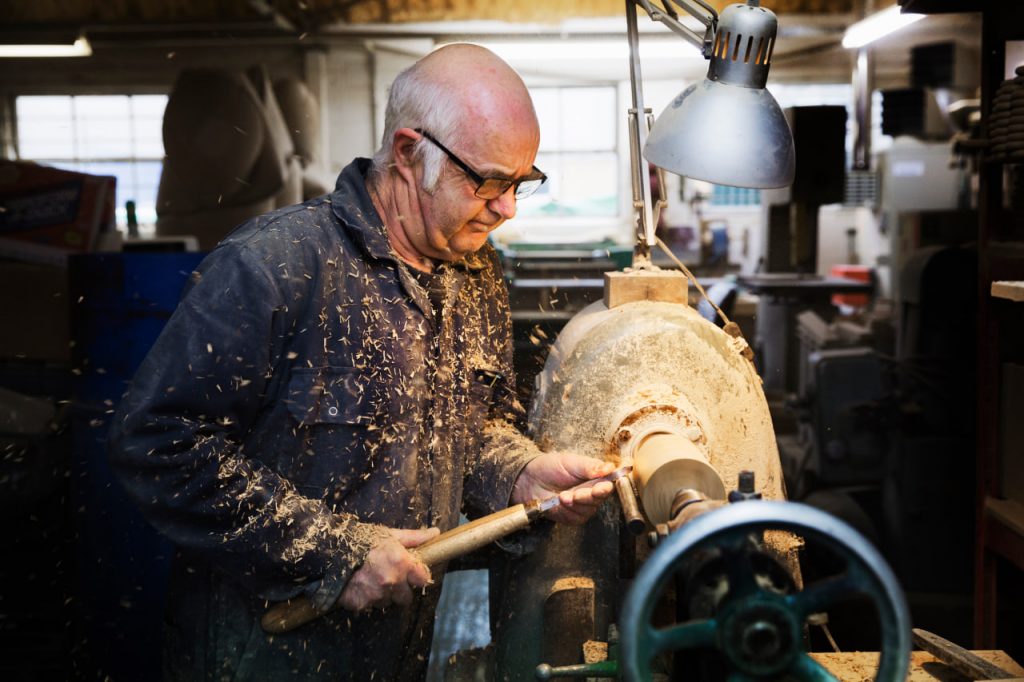When I first picked up a lathe, I had no idea what I was doing. The thought of working with sharp tools and spinning pieces of wood was both exciting and intimidating. I had always admired the beauty of handmade wooden objects but had no real experience in the craft. I knew I needed guidance, but I wasn’t sure where to start. That’s when I found Woodturning Basics.
A Nervous Start
At first, I was hesitant. Woodturning seemed so complex, and I didn’t even know the difference between a gouge and a chisel! I’d seen woodturning in action at local craft fairs, and I marveled at how experts could take a rough block of wood and shape it into something beautiful. But I didn’t think I could ever get to that level. Would I make mistakes? Could I handle the equipment safely?
These were the questions that kept me up at night before starting the course. But as soon as I logged in to my first lesson, I realized how wrong I was about the process. The course was designed for absolute beginners, like me. Every step was broken down clearly, and safety was emphasized from the very first lesson, which put my mind at ease.
Step-by-Step Learning
The structure of the course was a game-changer. I wasn’t thrown into complex techniques immediately. Instead, I started with simple projects—learning how to properly hold and use each tool, how to set up my lathe, and how to safely approach the wood. The instructors broke everything down in a way that felt achievable, and I was able to practice the basics repeatedly until I felt comfortable.
One of the most rewarding parts of the course was watching myself grow with each project. My first project was a small wooden bowl, which was far from perfect but served as a huge accomplishment. I was amazed at how satisfying it felt to have made something from scratch. That feeling fueled my motivation to keep going.
Gaining Confidence and Refining Skills
As the weeks went by, I began to notice a significant change in my work. What had started as a shaky bowl turned into smoother, more precise projects. I learned to handle more advanced tools and techniques—spindle turning, carving, and texturing—skills I never imagined I could master.
But what really changed for me was the confidence I gained. The instructors were always there to answer my questions, and the step-by-step instructions helped me understand the “why” behind each technique. I wasn’t just following instructions; I was beginning to understand the craft on a deeper level. I started to experiment with different types of wood, finishes, and designs. I even started incorporating my own ideas into my projects, giving each piece a unique touch.
Turning Passion Into Skill
What started as a hobby quickly turned into something more. As I developed my skills, I began to think about the kind of projects I wanted to create. I moved beyond basic bowls and pens, tackling more complex items like decorative vases and intricate wood sculptures.
Today, I can confidently say that I’ve gone from a complete beginner to a skilled woodturner. The projects I make are not only functional but artistic as well. I can look back at my first pieces and see how far I’ve come. I’m not just turning wood—I’m turning it into art.
The Supportive Community
What sets Woodturning Basics apart isn’t just the course content—it’s the sense of community. As I worked through each module, I was able to connect with fellow students. Whether it was through the online forums or shared project galleries, I felt supported and encouraged every step of the way. The community was a constant source of inspiration, and I loved seeing how others interpreted the same lessons in their own unique ways.
What’s Next for Me?
As I continue to refine my skills, I’ve set new goals. I’m thinking of launching my own woodturning business, crafting custom pieces for clients who appreciate the beauty of handmade work. I never imagined that something I started as a hobby could turn into such a fulfilling path.
Looking back on my journey, I’m so grateful for the resources and guidance that Woodturning Basics provided. The course didn’t just teach me the mechanics of woodturning—it transformed my approach to creativity, patience, and craftsmanship. If you’re considering taking the plunge into woodturning, I can honestly say that this course is the best place to start.
Woodturning isn’t just a skill—it’s a lifelong passion. And I’m just getting started.

